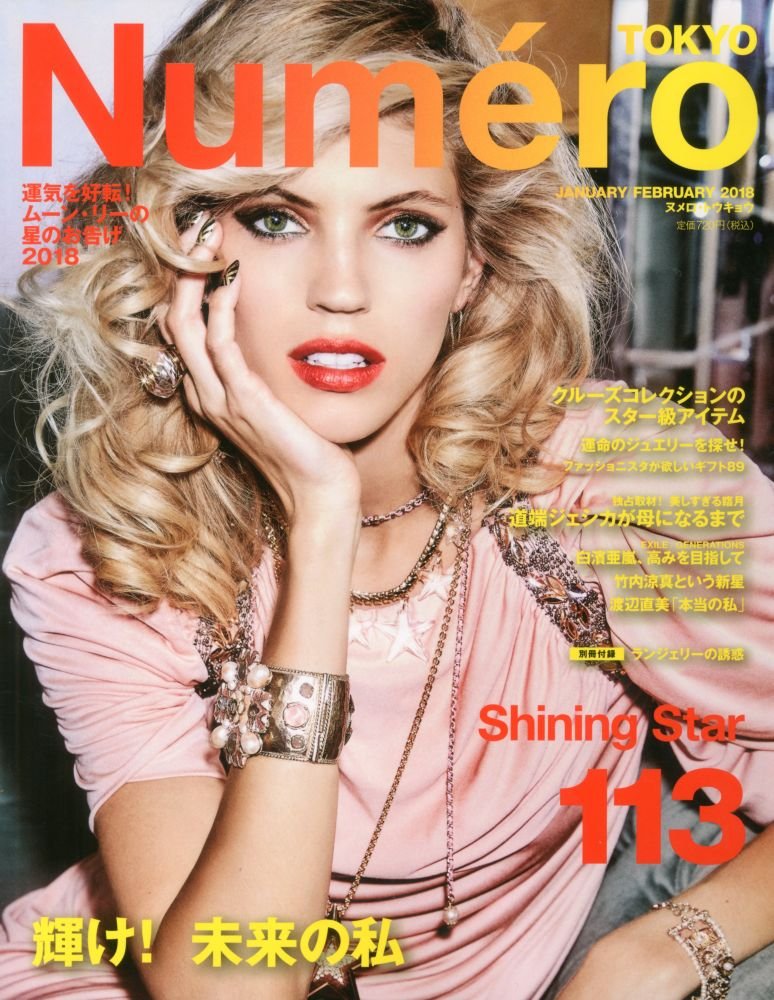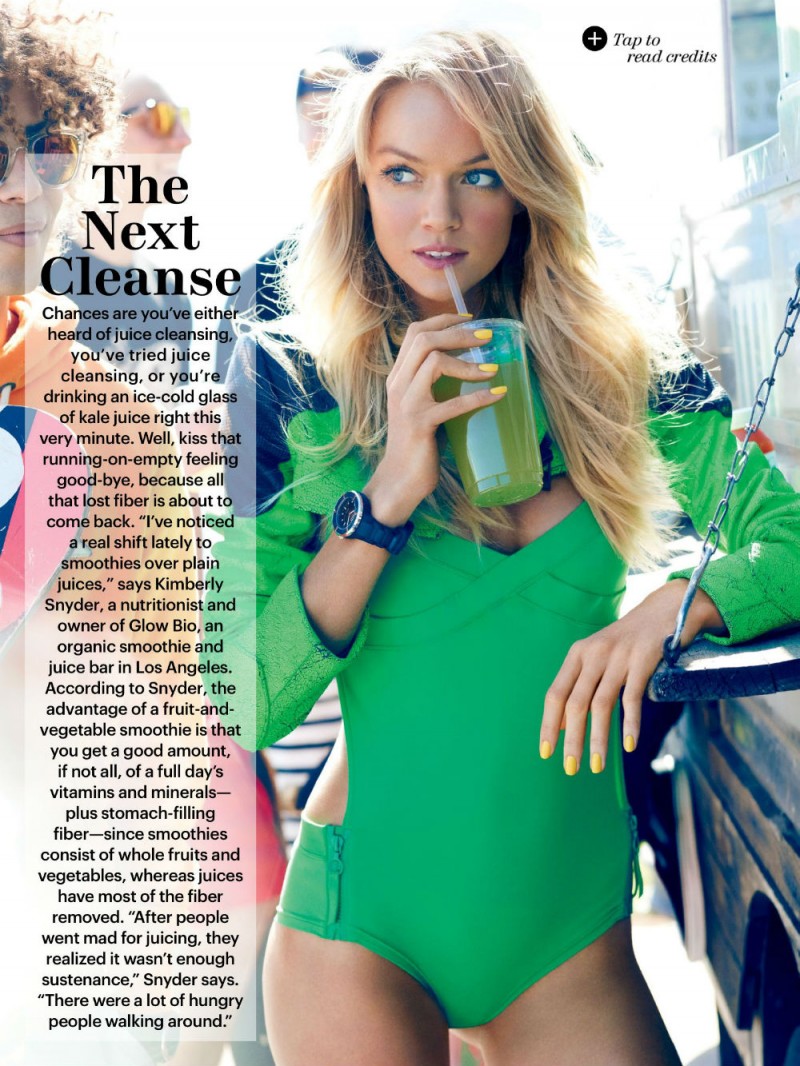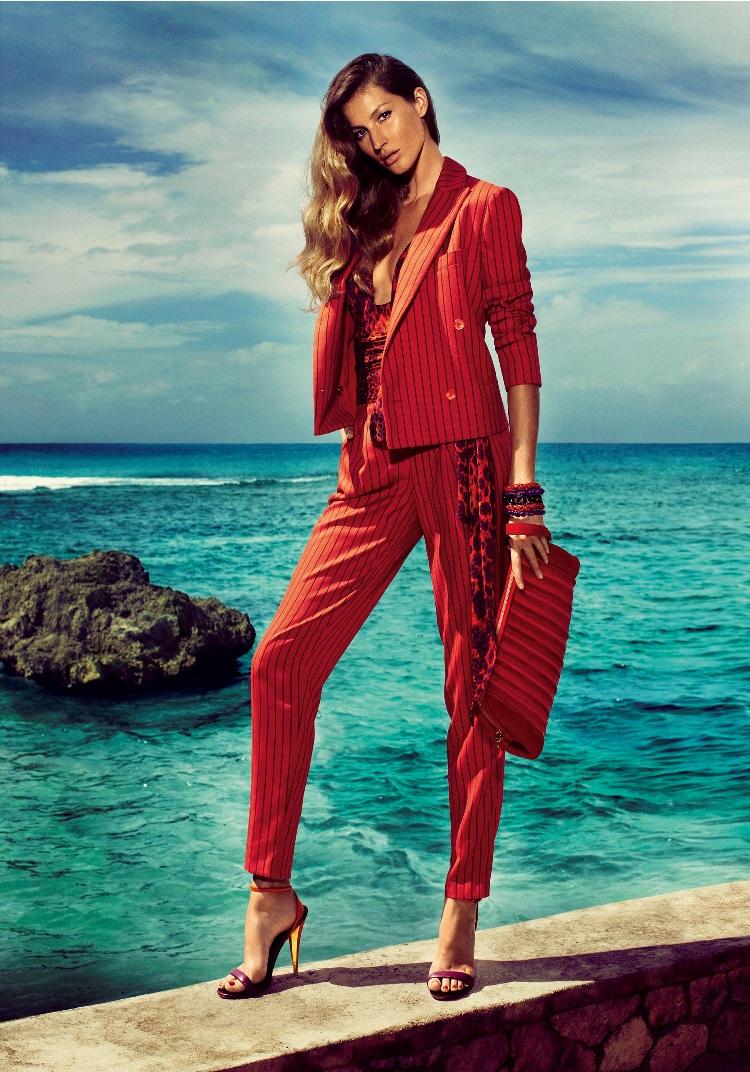Salvatore Ferragamo (5 June 1898 – 7 August 1960) was an Italian shoe designer and the founder of luxury goods high-end retailer Salvatore Ferragamo S.p.A.. Ferragamo worked with many Hollywood stars in the 1920s, before returning to Italy to found the eponymous company making unique handmade footwear. His scientific and creative approach to shoes spawned many innovations such as the wedge heel and cage heel. Film stars and celebrities continue to patronize his company, which has evolved into an international empire spanning the world.
Salvatore Ferragamo was born in 1898 to a poor family in Bonito, Italy, near Avellino, the eleventh of 14 children. After making his first pair of shoes for himself, a pair of high heels, at age nine (and his sisters to wear at their confirmation), young Salvatore decided that he had found his calling.
After studying shoemaking in Naples for a year, Ferragamo opened a small store based in his parent’s home. In 1914, he emigrated to Boston, Massachusetts, where one of his brothers worked in a cowboy boot factory. After a brief stint at the factory, Ferragamo convinced his brothers to move to California, first Santa Barbara then Hollywood. It was here that Ferragamo found success, initially opening a shop for repair and made-to-measure shoes, which soon became prized items among celebrities of the day, leading to a long period of designing footwear for the cinema. However, his thriving reputation as ‘Shoemaker to the Stars’ only partially satisfied him. He could not fathom why his shoes pleased the eye yet hurt the foot, so he proceeded to study anatomy at the University of Southern California.
After spending thirteen years in the US, Ferragamo returned to Italy in 1927, settling in Florence. He began to fashion shoes for the wealthiest and most powerful women of the century, from the Maharani of Cooch Behar to Eva Peron to Marilyn Monroe. He opened a workshop in the Via Mannelli, concentrating his efforts in experimenting with design, applying for patents for ornamental and utility models and some related inventions. Although he filed for bankruptcy in 1933 due to bad management and economic pressures, Ferragamo nonetheless expanded his operation during the 1950s to a workforce of around 700 expert artisans that produced 350 pairs of handmade shoes a day.
“The Rainbow” was created by Salvatore Ferragamo in 1938 and was the first instance of the platform shoe returning in modern days in the West. The platform sandal was designed for American singer and actress Judy Garland. The shoe was a tribute to Judy Garland’s signature song “Over the Rainbow” performed in The Wizard of Oz (1938) feature film. The shoe was a crafted using uniquely shaped slabs of cork that were covered in suede to build up the wedge and gold kidskin was used for the straps. His creation was a result of experimentations with new materials because of wartime rationing during World War II.
Salvatore Ferragamo died in 1960 at the age of 62, but his name lives on as an international company, which has expanded its operations to include luxury shoes, bags, eyewear, silk accessories, watches, perfumes and a ready-to-wear clothing line. At his death his wife Wanda and later their six children (Fiamma, Giovanna, Fulvia, Ferruccio, Massimo and Leonardo) ran the company. Ferragamo was always recognized as a visionary, and his designs ranged from the strikingly bizarre objet d’art to the traditionally elegant, often serving as the main inspiration to other footwear designers of his time and beyond.
His most famous invention is arguably the “Cage Heel”. Fiamma (Salvatore’s eldest daughter who died in 1998) inherited her father’s inimitable talent and came up with the “Vara pumps” in 1978.
A museum dedicated to Ferragamo’s life and work opened in the Palazzo Spini Feroni in 1995.[2] The palazzo had been bought by Ferragamo in the 1930s.[citation needed]
In March 2013, Ferragamo’s fashion house, Salvatore Ferragamo S.p.A., established the Ferragamo Foundation in Florence. The foundation was formed to cultivate young fashion designers, based on the ideas of Salvatore Ferragamo.
The company is currently owned by the Ferragamo family, which in November 2006 included Salvatore’s widow Wanda, five children, 23 grandchildren and other relatives. There is a rule that only 3 members of the family can work at the company, prompting fierce competition.
Wanda Ferragamo Miletti has led the group since 1960, when her husband and founder of the company, Salvatore, died. She is currently Honorary Chairman.
Salvatore Ferragamo
Born 5 June 1898
Bonito, Italy
Died 7 August 1960 (aged 62)
Florence, Italy
Residence Florence, Italy
Nationality Italian
Alma mater University of Southern California
Occupation Shoe designer
Known for Founder of Salvatore Ferragamo S.p.A..
Label(s) Salvatore Ferragamo
Spouse(s) Wanda Ferragamo-Miletti
Children 6
About Salvatore Ferragamo S.p.A.
Salvatore Ferragamo S.p.A. [salvaˈtoːre ferraˈɡaːmo] is an Italian luxury goods company, with headquarters in Florence, Italy. It specializes in shoes,[2] leather goods, Swiss-made timepieces, and ready-to-wear for men and women. The company licences eyewear and watches.
It is the parent company of the Ferragamo Group which employs about 4,000 persons and maintains a network of over 685 mono-brand stores, and it runs operations in Italy and worldwide.
Salvatore Ferragamo emigrated from southern Italy to the US, first to Boston and then California in 1914. He opened the Hollywood Boot Shop in 1923 and made shoes[2] for movie stars such as Joan Crawford and Gloria Swanson, as well as for films such as Cecil B. DeMille’s feature film The Ten Commandments.[3] He returned to Italy and set up a shoe shop in Florence in 1927.[4] The current shoemaking company regards 1928 as the date of its foundation, however, and it therefore celebrated its 80th anniversary in 2008.[3]
Salvatore Ferragamo filed for bankruptcy in 1933,[citation needed] during the Great Depression, but by 1938 he was in a position to buy the Palazzo Spini Feroni, one of the great palaces of Florence.[3] This houses the company’s flagship store and a museum dedicated to Ferragamo’s life and work.
The company flourished after World War II, expanding the workforce to 700 craftsmen producing 350 pairs of handmade shoes a day.[citation needed] After Salvatore’s death in 1960, his widow Wanda took over the running of the business and expanded its operations to include eyewear, perfume, belts, scarves,[4] bags, watches, and a ready to wear clothing line.
Ferruccio Ferragamo, current president of Salvatore Ferragamo S.p.A.
The company’s majority owners remain the Ferragamo family, which in November 2006 included Salvatore’s widow Wanda, five children, 23 grandchildren and other relatives.[5] There is a rule that only three members of the family can work at the company, prompting fierce competition.[5] To ease these tensions, in September 2006, the family announced a plan to float 48% of the company on the stock market, and since October 2006 Michele Norsa has served as managing and general director.[4] However, as of January 2008, this plan may be on put on hold in the midst of the downturn in the financial market.[6] If the listing on the stock market proceeds, the fund will be directed primarily towards building its positions in China.[7] The company is holding its 80th birthday exhibition in Shanghai.[3]
In 2011 the company was listed on the stock exchange.[8]
For the fiscal year 2016, Salvatore Ferragamo reported preliminary consolidated revenues of 1,438 million euros. As of December 31, 2016, the Salvatore Ferragamo Group’s retail network consisted of 402 directly operated stores (DOS), while the wholesale and travel retail channel included 281 third party operated stores (TPOS), as well as presence in major department stores and high-end multi-brand specialty stores.[9]
On August 2, 2016 Eraldo Poletto was appointed as new CEO of the group. On March 8, 2017 conclusion of the relation with Poletto granted interim management powers to the Chairman, Ferruccio Ferragamo.
Throughout its history, the company has been known for innovative designs and use of materials. Such ingenuity goes back to Salvatore’s time in California, when he studied anatomy to make shoes which were more comfortable. Notable innovations include the wedge heel, the shell-shaped sole, the ‘invisible’ sandal, metal heels and soles, the 18-carat gold sandal, the sock-shoe, sculpture heels, and the gloved arch shoe created for the Maharani of Cooch Behar in 1938.[3] Metal-reinforced stiletto heels were made famous by Marilyn Monroe.[4] The company is also known for the ‘Gancini’ decoration, the ‘Vara’ patent ballet pump, the Salvatore bag and the use of patchwork.[3] It makes also eyewear and watches in partnership with Marchon and Timex Group.
Salvatore worked with film stars and celebrities from his earliest days in Hollywood. Clients over the years included Audrey Hepburn, Sophia Loren and Greta Garbo,[4] as well as Andy Warhol, Grace Mugabe and Diana, Princess of Wales.[3] The company made Margaret Thatcher’s famous handbags[7] and for King Jigme Khesar Namgyal Wangchuck during the coronation on November 6, 2008 in Thimpu, Bhutan.
When Fashion Goes Public
When Salvatore Ferragamo opened his “Hollywood Boot Shop” back in 1923, he probably didn’t envision the modest shoe repair parlor blossoming into a multimillion-dollar fashion empire.
Yet Ferragamo’s wife, five children, 23 grandchildren and quite a few other relatives are betting that the cobbler’s original vision–glamorous footwear for cinema stars–will transform their private assets into a publicly traded success this coming spring.
Fashion has long flirted with Wall Street, but these private-to-public ventures don’t always live up to investor expectations. In the last two decades, several fashion houses have dipped their toes into the public pool with varying outcomes.
American accessories company Coach went public in 2000, and its share price has nearly doubled since then. In the last fiscal year, net sales reached $2.1 billion, a more than 23% increase from the previous year.
Donna Karan, on the other hand, had a brilliant takeoff–and a rough landing. The IPO was highly anticipated by Madison Avenue and Wall Street insiders alike. Karan’s working woman aesthetic, which fueled fashion in the mid-to-late 1980s, had transitioned nicely into 1990s minimalism, mostly because of the designer’s foray into moderately-priced sportswear (with DKNY) and denim (DKNY jeans). The company reported $600 million in wholesale volume for 1995. When the company went public in June 1996, shares rose $4 from the initial price of $24 on the first day of trading. But rapid expansion plans backfired, and the stock plummeted to $9 the next year. That April, luxury goods leader LVMH scooped up the company for $643 million. Although Donna Karan International has experienced a few rough years under the LVMH umbrella, the appointment of Marc Weber as chairman and chief executive marks a turning point in the brand’s recovery. And to think, it only took ten years.
Could Ferragamo experience the same fate as Donna Karan or will it follow in the footsteps of Coach? The latter scenario is more likely than the former, says James Hurley, luxury goods analyst for Telsey Advisory Group, an independent research firm based in New York City. He has high hopes for the Italian luxury goods group. In the 2005 fiscal year, the company reported a 12% increase in sales and growth in all markets across the board. Even a mature market like Europe registered an 11% to 15% growth margin.
Patti Pao, founder of the Pao Principle, a consulting firm based in New York, says that The Salvatore Ferragamo Group’s two main incentives for an IPO are generating capital for expansion and enabling family members to cash out. The group has a peculiar rule–only three family members can work within the company at a given time. “The competition to work [at Ferragamo] is fierce,” says Pao. “Going public provides a reward for the non-affiliated family members.”
It’s not surprising, then, that Ferragamo has enlisted an outsider, former Valentino Fashion Group chief executive Michele Norsa (see: “Valentino Hopeful After CEO’s Fashionable Exit”), to take the reins in this initiative. Norsa played a crucial role in Valentino’s 2005 spin-off from Manifattura Lane Gaetano Marzotto & Figlito, which gave new shareholders control of Italian haute-couture house Valentino and mega-brand Hugo Boss, as well smaller assets including M Missoni, a knitwear house known for its 1970s-tinged zigzag print.
At Ferragamo, Norsa will work to broaden the business internationally and deepen the brand loyalty in more mature markets such as Europe and the U.S. He’ll also capitalize on the success of the “I Love Salvatore” ad campaign, as well as newfound fashion editorial interest in classic Ferragamo styles, including the bow flat, with its ribbon embellishment, and the cage heel.
The family will likely give up about half of its stake in order to fund these pursuits, Hurley says.
“If you look at the proxy of other companies like an LVMH, Bulgari or Richemont, you’ve got 40% to 60% controlled by the families, and that would imply anywhere from 40 to 60% that might be offered to the public.”
So, prospects look promising, but Pao is adamant that the company should better define its growth strategy–some aspects of which remain unclear.
“They have mentioned that they will use the proceeds of their IPO to fund global expansion (e.g., more retail outlets) and the redesign of existing stores,” she says.
Although the first few months–even years–as a public company may prove shaky for Ferragamo, the success of other family-owned powerhouses like LVMH is good news for the Italian luxury group. Despite the risks, Hurley is confident the Ferragamo family and investors alike will reap the benefits of an IPO.
“You’ve got very a strong brand that has iconic products and heritage that can be leveraged on a global basis,” he says. “For investors, that’s appealing, because there is some value and security in owning a portion of a strong brand–you’ve got global growth prospects.”
Made in Italy: Salvatore Ferragamo’s ideas, models and inventions
1920s
The work of Salvatore Ferragamo was distinguished by the originality of his footwear designs and by a continuous experimentation with models, construction techniques, and materials. In some cases, his designs were simply avant-garde, while in others, they were perfectly in line with the general mood of the times.
At the end of the 1920s, Ferragamo’s creations could be situated in a stylistic context that had been in vogue since the early years of the 20th century. This style was formed in harmony with the art world and characterized by an acceptance of unusual materials, geometric designs and surprising color matching – the tangible signs of changing attitudes to clothing fashions and accessories.
1930s: the Wedge
From the middle of the 1930s, many patents were concerned with shape and form, whether for functional or aesthetic considerations. The ‘Wedge’ is perhaps the most famous Ferragamo creation and was patented in 1937. It was designed with functionality in mind, to elevate the heel and give both the heel and the instep a stable support.
However, in its numerous variations, it gradually became pressed and rounded, grooved and painted, decorated with tiny mosaic mirrors or set with precious stones, allowing experimentation with shape and expression of an innate aesthetic sense. And this is an overall characteristic that is common to the entire history of Italian design, owing perhaps to the fact that whoever works in Italy is lucky enough to have a surrounding artistic and cultural heritage unequalled throughout the world. In Italy, one is continuously under the influence of beauty, good taste and a sense of harmony.
1940s
In the war year of 1943 he threw himself into the design of offensive and defensive war machines, such as the ‘Marine Fort’, the ‘Multi-Launcher Torpedo Boat’ and the ‘Anti-Aircraft Offensive and Defensive System’.
Certain invention patents involved the revolutionizing of centuries-old traditions of making shoes. For example, in 1931, a system of instep reinforcement in mental laminates, the ‘shank’, was created which was lightweight but able to provide a rigid support.
In 1946, Ferragamo designed children’s shoes called ‘First Steps’ made with a suction cup system that provided a better underfoot adhesion. In 1953, he created ‘Uppers Mounted on an Elasticized Support Structure’ which allowed the insertion of the foot into the shoe without openings or lacing.
1950s
1956 was the year of women’s footwear heels made with an external metallic stucture formed by ‘Caged’ woven elements, and the footwear with ‘Interchangeable Sheaths’. The patent for ‘Metallic Soles’, resulted in the celebrated 18-carat gold sandals originally made for an Australian customer. The ‘Shell Soles’ of 1957, had the special feature of rising the uppers and heel in such a way that gave an added stability to the shoe. This sole wa also used in a wide range of models and also for ballet shoes.
Ferragamo’s legacy
Today, many of these patents are a precious source of inspiration for designers and creative artists, who have based their own collections on works from these archives. Even after the death of Salvatore ferragamo, the company continued to devote enormous care and attention to its creations, and to patents, both ornamental and everyday wear models.
Take the men’s ‘Non-Slip Sole’ footwear of 1997, or the ‘Bag with Detachable Upper Sections’ of 1999 – allowing the body of the model to be changed -, ot the ‘Suitcase in Carbon Steel: one side concave and one side convex and rounded in the centre’ of 2000; or the ‘Heel with Suspension Element’ of 2002. These recent patents illustrate the main principle of the company’s culture, which has always bestowed great importance on materials and function, simultaneous with research into aesthetic effects.
OVERVIEW (from official company website)
Salvatore Ferragamo S.p.A., founded in 1927, is the parent company of the Ferragamo Group, one of the major players in the luxury goods industry, which focuses on the creation, manufacture and sale of footwear, leather goods, clothing, silk products, other accessories and perfumes for men and women, all Made in Italy. The product range is completed by eyewear and watches, manufactured under licence by third parties in Italy and abroad, in order to make good use of local skills.
The unique, exclusive design which has always distinguished the Group’s products is obtained by combining style, creativity and innovation with the quality and craftsmanship typical of Italian-made goods.
Salvatore Ferragamo products have been made since the 1960s in a select network of workshops.
The Group also develops and distributes perfumes under the “Salvatore Ferragamo” and “Emanuel Ungaro” brands, through its subsidiary Ferragamo Parfums.
The Ferragamo Group is present in Italy and worldwide through companies which enable it to cover the European, American and Asian markets.
In particular, the Ferragamo Group is present through a network of directly operated (DOS) “Salvatore Ferragamo” mono-brand stores (retail channel). The Group also distributes its products through mono-brand third-party operated stores or corners (TPOS), complemented by a prestigious presence in high-level multi-brand department stores and specialty stores (which, as a whole, constitute the wholesale channel).
Taking into account the entire distribution structure, the Ferragamo Group is present in over 90 countries all over the world.
THE HISTORY
The history of the Salvatore Ferragamo Group is an eventful one, which has characterised its growth and development and enabled it to become one of the key players on the international luxury market.
1927
Salvatore Ferragamo incorporates his first Company, based in Florence, focusing on the study, creation, manufacture and sale of ladies’ footwear
1938
opening of the first “Salvatore Ferragamo” single-brand directly-operated stores (DOS) in Italy (Florence and Rome) and the UK (London)
1948
opening of the first DOS in the USA (New York)
1965
presentation of the first leather goods and ready-to-wear ladies’ wear collections
1971
development of the silk and accessories collection
1975-80’s
development of the footwear and menswear collection
1986
opening of the first DOS in Asia (Hong Kong)
1991
opening of the first DOS in Japan (Nagoya)
1994
opening of the first DOS in China (Shanghai)
1995
opening of the first DOS in South Korea (Seoul) and inauguration of the Salvatore Ferragamo Museum in Florence
1997
incorporation of Ferragamo Parfums, a joint venture with Bulgari S.p.A. for the creation and distribution of perfumes
1998
commencement of business on the eyewear market
1999
opening of the first DOS in Latin America (Mexico City)
2001
acquisition of Bulgari S.p.A.’s entire holding in Ferragamo Parfums
2006
opening of the first DOS in India (Mumbai)
2008
launch of watch line
2009
opening of the first flagship store in the Middle East (Dubai)
2009
launch of new website www.ferragamo.com with e-commerce in the main EU countries and the USA
2010
opening of the first single-brand stores in Turkey (Istanbul), Qatar (Doha), Egypt (Cairo) and South Africa (Johannesburg), and the goal of 91 single-brand stores reached in Greater China
2011
Initial Public Offering on Milan Stock Exchange.
About ZARZAR MODELS
ZARZAR MODELS is one of the top modeling agencies for women in the United States representing models in print fashion editorials, high fashion runway, film, television commercials, and promotions. The agency represents top models in all of the major fashion cities and counties including Los Angeles, Beverly Hills, Hollywood, Orange County Southern California, San Diego, San Francisco, Las Vegas, Phoenix, Miami, New York, London, Paris, Milan, Sao Paulo, and Tokyo and recruits and represents models throughout the world through its global fashion and modeling network.
Shop the fashion modeling campaigns at:
https://zarzarfashion.com
or simply visit the world's most beautiful supermodels at:
https://tv.zarzarmodels.com












